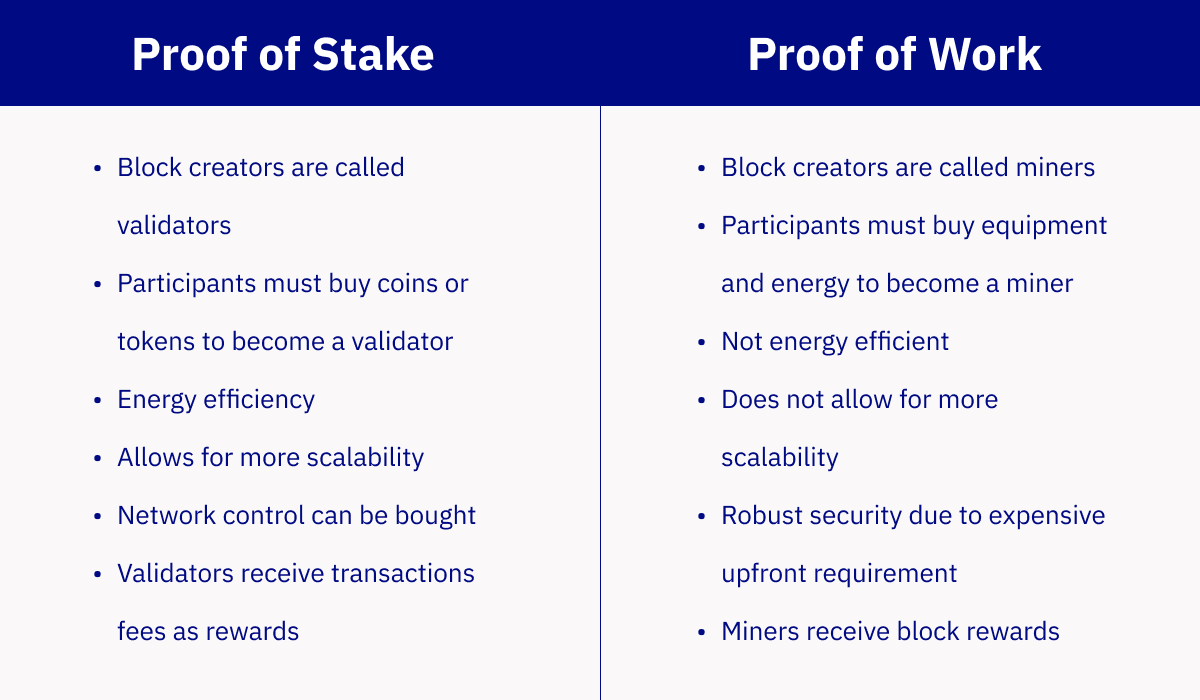
Disclaimer: Copyright infringement not intended.
Context
- On September 15, the Ethereum blockchain fully transitioned to a new way of processing transactions.
To understand this article Read about Cryptocurrency Basics here: https://www.iasgyan.in/daily-current-affairs/cryptocurrency-8
What is Ethereum?
- Ethereum is one of the most used platforms by developers to build decentralised apps (dApps), smart contracts, and even crypto tokens. The platform’s currency, Ether is only second to Bitcoin (BTC) in terms of market capitalisation.
Ethereum Merge Event
- Ethereum is about to undergo perhaps its most transformative upgrade since its inception. The Merge is transitioning from a proof-of-work (PoW) to a proof-of-stake (PoS) consensus mechanism, which is used for authenticating transactions.
Difference between PoW and PoS
Cryptocurrencies do not depend on centralized entities to verify the validity of new transactions added to the blockchain network, instead they rely on a distributed network of miners to do so.
Proof-of-work (PoW) Mechanism
- PoW is a consensus mechanism used to verify and add new validated transactions to a blockchain. To this end, virtual miners around the globe compete to publish new blocks of transactions by being the first to solve cryptographic puzzles using high-powered computers.
- Under PoW, each block of the transaction has a hash attached to it. For a block to be validated, the miner has to generate a target hash that is less than or equal to that of the block. The miner first to generate this target hash will be able to update the blockchain and receive the reward. PoW has some significant advantages such as increasing the power and security of the network. On the flip side, however, PoW is energy-intensive PoW, can lead to scalability issues, and makes the transaction process more costly.
- This transition could not be timelier given the surge in DeFi platforms and dApps, rising stablecoin usage, and the escalation in NFT minting and sales. The transition to PoS will overcome the deficiencies in the PoW mechanism, especially the scalability issues plaguing Web3’s ecosystem including network congestion and rising gas fees.
Proof-of-stake (PoS) consensus mechanism
- PoS is a consensus mechanism processing transactions and adding new blocks to the blockchain. However, PoS, does away with the miners, and passes the network’s control to validators, attributing mining power to them based on the number of coins they stake. While PoW requires miners to solve complicated cryptographic puzzles, PoS, on the other hand, requires validators to hold the coins and offer them as collateral for the chance to validate blocks. Those with staked coins become validators.
- To become a validator, a specific number of coins have to be staked. For instance, in the upcoming PoS system, validators are selected to create blocks. The validators for each block transaction are selected using an algorithm. The amount of stake and validation experience, the number of coins staked, and the length of time those coins are in the pool are among the dedicated variables. The more ether they stake the more chance they have of being selected. The miner receives a transaction fee once the block is verified and added to the blockchain.

- Developers say the transition to what is called a ‘proof-of-stake’ consensus mechanism will cut Ethereum’s energy consumption by 99.95%. This is an important day for crypto trackers as it is known as Ethereum’s Merge event.
- The change in the way Ethereum builds the blockchain comes with not just environmental consequences, but also major cyber and financial security implications.

Why is Ethereum moving towards PoS?
Ethereum is moving towards PoS to bring the network closer to realizing its vision of being more scalable, secure, and sustainable. Some of the reasons why Ethereum is moving to proof of stake include:
Energy efficiency
- There is an expected 99% reduction in energy costs associated with processing Ethereum transactions. The energy efficiency increases as dependency on PoW computation decreases. In addition to being an energy-intensive process, PoW generates electronic waste as well, reportedly, computer servers used for crypto mining often become obsolete in 1.5 years and they end up in landfills.
Lowered barrier to entry
- PoS will also lead to lower barriers to entry and reduced hardware requirements as validators, unlike miners will not have to repeatedly purchase expensive mining equipment and pay the running costs. In the case of PoS, block validations can actually happen on a typical laptop.
Increased throughput and scalability
- There is an expected increase in throughput and transaction speed by a maximum of 10%. In theory, validators can be chosen faster in the PoS model, as they are chosen on the basis of tokens they hold and stake, and not on the basis of solving cryptographic puzzles
- In addition, PoS is more scalable compared to PoW as it does not depend on computation requirements. PoS can also potentially resolve scalability issues by introducing new scaling solutions like sharding.
- Sharding basically splits an entire network, such as Ethereum, into smaller partitions called shards, each with its own transaction data, thereby, decreasing the pressure on the main blockchain, increasing the throughput, and bringing down the gas fee
Increased security
- PoS advances Ethereum crypto-economic security. For instance, under PoS economic penalties for misbehavior make 51% of attacks exponentially more costly for an attacker compared to PoW.
Why is there a need for a new mechanism?
- Proof-of-work, needs powerful mining hardware that consumes a lot of electricity and generates enormous amounts of heat.
- Many environmentalists, policy makers, and regulators have strongly criticised the impact of Bitcoin mining on local communities.
- Ethereum admitted that their crypto’s total annualised power consumption nearly matches that of Finland while its carbon footprint is comparable to Switzerland. For some time, European countries even called for a crypto mining ban.
- As a response to the backlash, Ethereum has decided to switch to a ‘proof-of-stake’ consensus mechanism.
Significance
- In 2021 a study by the University of London found that in general the energy consumption of the proof-of-work based Bitcoin was about a thousand times higher than that of the highest consuming proof-of-stake system.
- Hence, this mechanism can be adopted by other crypto platforms keeping the Environment under consideration.
https://epaper.thehindu.com/Home/ShareArticle?OrgId=GRPAA1JN3.1&imageview=0





